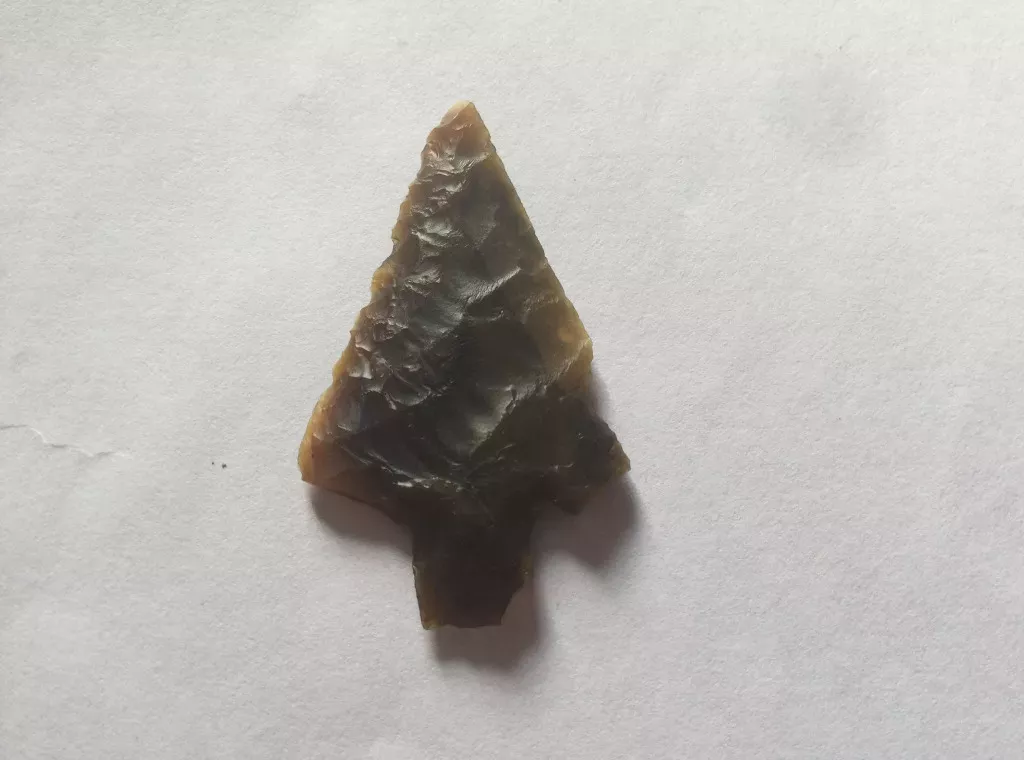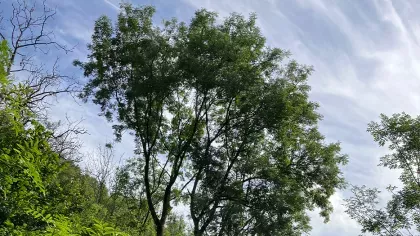3 May 2025
5 min read
Five secrets of the Loder Valley
A new pathway through the Loder Valley Nature Reserve at Wakehurst is now open for you to explore!

In December 2022, we closed the 150-acre Loder Valley Nature Reserve, in a vital conservation effort.
The closure was to address the impact of ash dieback, a disease affecting over 90% of Wakehurst’s ash trees. Affected trees near paths and roads were removed, while fallen wood was left where possible to support natural regeneration.
Now, nearly three years later, we’ve partially re-opened the Nature Reserve with a wild woodland trail. It's an important step in Wakehurst’s ongoing work to manage biodiversity loss and the effects of climate change.
Removing trees along the pathways created new open spaces, which are already supporting a wide range of native species, providing fresh opportunities for wildlife to thrive.

1. A tapestry of UK ecosystems
Now open for visitors, a dedicated 3.7km trail takes you on a tour of some of the UK’s most biodiverse habitats.
Check off a woodland habitat on your walk, with its rich undergrowth of brambles and hazels that hide dormouse nesting boxes. The path will also take you through Hanging Meadow, an ancient grassland that is speckled with wildflowers and hums with the gentle buzz of insect life throughout the warmer seasons.
Don't forget to pick up a Loder Valley map and gate code from our Visitor Centre before you enter the Reserve.

2. Embark on a journey through ancient history
The wider Loder Valley landscape is marked with rolling hills studded with trees and sandstone outcrops that have been around since before medieval times. The newly opened pathways take you through semi-ancient woodlands.
This woodland has enjoyed a lush green cover as early as the 17th century, with the delicate trickle of narrow streams existed thousands of years before that.
Our nature warden has even found a 4,000-year-old flint tang and barbed arrowhead in the valley, dating back to the Neolithic period (10,000 BC).
Did you know? Wakehurst was the first botanic garden in the world to open a nature reserve within its estate for the conservation of native flora and fauna in 1980.
Hanging Meadow also has a history of its own, as it’s the only meadow in the Wakehurst landscape which has always been a meadow and one of only 3% left in the UK of natural origins. Left undisturbed by herbicides or pesticides, the delicate and diverse flora has been managed by cutting and grazing, leaving it as a spectacle that changes throughout the year.


3. What’s in a name?
Gerald Loder (who became Lord Wakehurst) inherited the land in 1903 and began the gardens’ transformation into a botanic collection.
The namesake of the Loder Valley Nature Reserve, globe-trotter Loder would search for the perfect soil and position needed for his exotic specimens to thrive.
The Pinetum began to take shape in 1905, but Loder’s pride and joy was the magnificent rhododendron collection. Combined with Kew's collection, it's the second most important conservation collection in a botanic garden in the world.

4. A haven for native wildlife
The reserve is a diverse landscape of woodland, meadows and wetlands, and is home to a range of species of butterflies, deer, birds and much more.
Embarking on a wilder woodland walk, you’ll be sure to spot some movement through the trees. Don’t forget you’re a guest in their native habitat, so tread carefully and stick to the designated paths.
With three wildlife-spotting hides along the route, you’ll be spoilt for choice. At the Kingfisher Hide, keep an eye out for a flash of blue, as these beautiful birds rest on our nesting banks. Along the water, the Tern and Hobby Hides are a great place to sit and wait for the chance to see bright white common terns resting on rafts, or hobbies hunting over the water.

Away from prying eyes, sleepy dormice are either hibernating along the ground or found cosied up in one of the nesting boxes, which are checked monthly from April to November by our licensed dormouse handlers as part of the National Dormouse Monitoring Programme.
Did you know? Dormice hibernate for up to half a year, and it increases their life expectancy for up to seven years. Their furry tail helps maintain their body temperature during this time.

5. Traditional landscape management in action
The Nature Reserve might look like it is left to grow wild, but our expert landscape team work hard to maintain its biodiversity and conservation features. These practices also reflect the medieval history of the landscape, as farming would have been unlikely due to the hilly land.
Traditional approaches like cutting hay and grazing sheep help us maintain the beauty and biodiversity of the landscape, conserving hundreds of plant species and the insects, birds and mammals they support.
The land is also coppiced, cutting the stems of trees in the woodlands to ground level. This lets the shoots grow up from the remaining stools, while we re-use the stems for hedge laying and as bean poles and pea sticks.
The team are also providing hazel bundles to a local river trust to construct leaking dams to help with slowing water flow and preventing flooding.
Deep in the woodlands, we even make our own sustainable charcoal to keep our woods healthy and thriving. When not used for charcoal, timber from the woodlands has also found new life as planters in the Children’s & Community Garden, and even for the braziers at Glow Wild!

So what’s next for the Loder Valley Nature Reserve?
We’ve got 150 acres to look after, so there's still lots of work to be done behind the scenes as we continue health checks on our trees.
Our sheep have continued to graze whilst the reserve has been closed, so we’ll be welcoming them back next winter, and our landscape team are looking at more innovative ways to create a home for native wildlife.
Experience this wild and historic landscape for yourself.
.jpg.webp?itok=E2KY52Xu)

